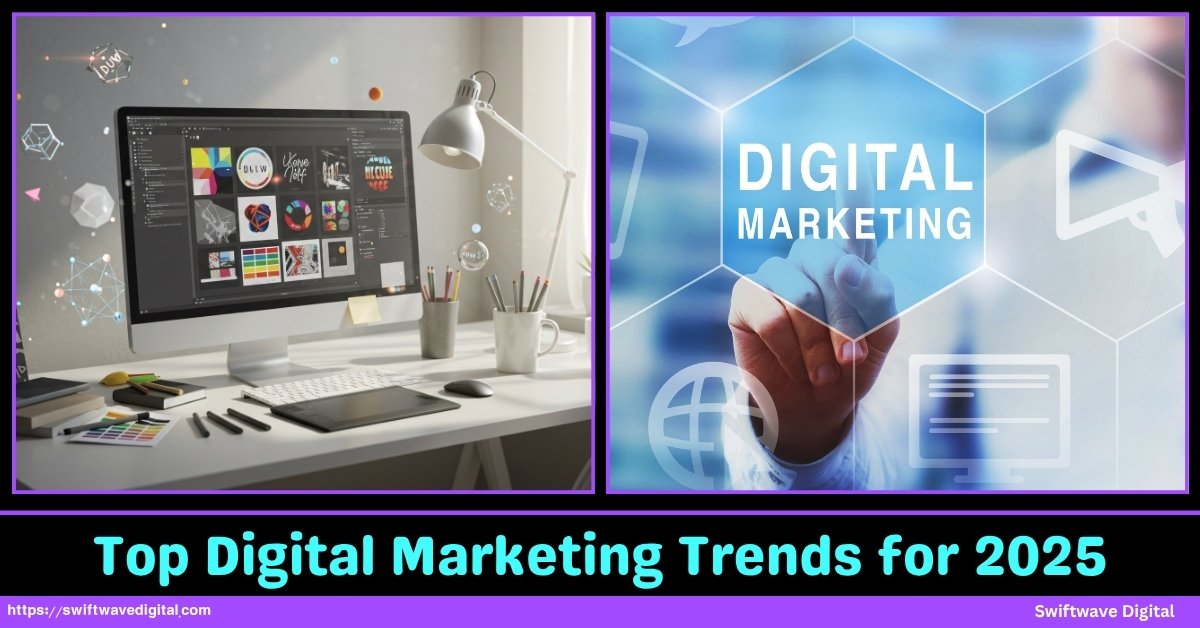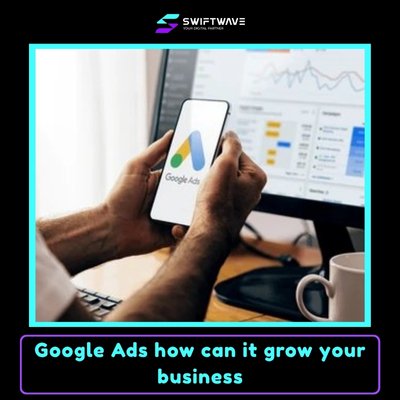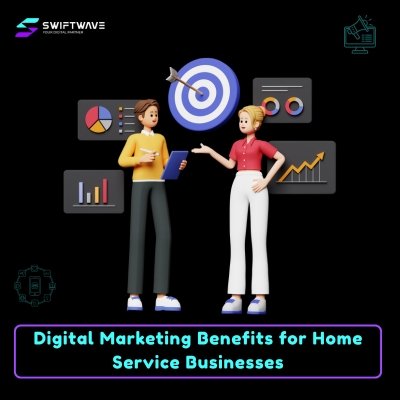Digital marketing in 2025 is not the same game it was even a year ago. Algorithms are evolving, consumer expectations are higher, and automation is changing how brands connect with audiences.
Businesses that still rely on outdated tactics will struggle to stay visible, while those embracing new tools, data-driven personalization, and platform shifts will lead the pack.
This year is about smarter execution not just posting more, but connecting deeper and converting faster through precision and strategy.
From AI-powered campaigns to the rise of social commerce, every marketer needs to understand where the industry is heading and how to adapt before competitors do.
Top Digital Marketing Trends for 2025
In this guide, we will explain the top Digital Marketing trends shaping 2025 and how you can use them to drive real business growth.
AI and Automation Become Table Stakes
AI and automation are no longer experimental—they’re a necessity for every serious marketing team. In 2025, digital marketing is driven by tools that think, learn, and optimize faster than any human team could manually.
From ad targeting and email segmentation to content creation and customer support, AI is embedded in every layer of marketing. The market for AI in marketing is estimated to exceed $47 billion in 2025, which shows how central it has become to growth strategies.
For businesses, this means integrating AI-powered analytics, chatbots, and automation platforms isn’t optional—it’s fundamental to staying competitive.
Marketers now rely on machine learning to analyze customer behavior in real time, adjust campaigns instantly, and predict which messages will convert best.
The focus isn’t just on efficiency but accuracy—getting the right message to the right person at the right time without guesswork.
The takeaway is clear: if you’re still running campaigns manually, you’re falling behind. Start small by automating repetitive workflows and build from there with AI-driven insights for long-term scalability.
First-Party Data & Privacy Are Critical
With global privacy regulations tightening and third-party cookies disappearing, first-party data has become the new currency of digital marketing. In 2025, marketers must own their audience relationships instead of renting them from platforms.
Collecting data directly through websites, apps, and CRM systems provides cleaner, more reliable insights than third-party data ever did.
Consumers are more aware of how their information is used, and transparency builds trust. Companies that clearly communicate their data practices and give users control will earn loyalty.
This shift also means marketers need stronger infrastructures for consent management, secure storage, and ethical data use. First-party data helps personalize campaigns while respecting privacy laws, making marketing both effective and compliant.
The goal now is to move from dependency on external data sources to a self-sufficient model where audience insights come directly from real interactions.
Building a sustainable data foundation in 2025 isn’t just compliance—it’s smart business.
Omnichannel & Cross-Platform Experience
Consumers no longer move in a straight line from ad to purchase—they bounce across social media, search engines, apps, and physical stores before making decisions.
That’s why 2025 is the year of true omnichannel marketing. Successful brands understand that consistency across every touchpoint is key. Whether someone engages through Instagram, email, or a website chatbot, the experience should feel connected and seamless.
Research shows that most customers use multiple channels before buying, meaning businesses can’t afford to operate in silos anymore.
Omnichannel doesn’t just mean being present everywhere—it means ensuring every platform talks to the others. For example, your paid ads should align with your email offers and website messaging.
The customer journey has to be mapped with continuity, not fragmentation. To execute this well, marketers must integrate their analytics systems so data flows between platforms.
The outcome is a smoother, more personalized journey that increases conversions and brand recall. Simply put, in 2025, customers expect convenience; brands must deliver it everywhere.
Short-Form Video & Interactive Content Gain More Weight
Attention spans are shorter than ever, and platforms like TikTok, Instagram Reels, and YouTube Shorts dominate digital engagement. In 2025, short-form video is not just a creative choice—it’s a business necessity.
These videos drive the highest engagement rates because they’re fast, authentic, and easy to consume. Brands are also investing in interactive formats like polls, live Q&As, and augmented reality filters to create two-way communication instead of one-way promotion.
Static ads and long blog posts are no longer enough to hold attention. Instead, 15–60 second videos with clear storytelling and visual hooks are what capture users.
Interactive content keeps audiences involved, encourages sharing, and provides valuable feedback through engagement metrics.
Businesses can repurpose short-form content across multiple channels to stretch their budgets further.
The guiding rule for 2025: if your content doesn’t grab attention within three seconds, it’s lost. Focus on clarity, emotion, and value over production perfection.
Social Commerce & Influencer Marketing Evolution
Social media platforms have transformed into full-fledged sales channels. In 2025, the gap between content and checkout has almost disappeared.
Consumers can discover, review, and buy products directly inside apps like Instagram, TikTok, and Facebook. This is the rise of social commerce a trend reshaping eCommerce strategies worldwide. Influencer marketing, which was once about reach, has become about trust and niche authority.
Audiences now prefer creators who provide real value and authentic opinions rather than flashy endorsements. Brands are moving toward long-term collaborations with micro and nano-influencers because their engagement rates outperform large celebrities.
With new tools for in-app shopping, live-stream selling, and AI-based influencer discovery, social commerce is easier to track and measure.
The focus for marketers should be on community-led sales where influence, content, and convenience merge. In 2025, your social media isn’t just your billboard—it’s your storefront. Every post, story, and partnership must have a measurable business goal behind it.
Search & SEO + Emerging “Search Everywhere” Formats
Search has evolved beyond Google. People now search through social platforms, voice assistants, AI chat tools, and even visual engines like Pinterest Lens. In 2025, marketers must think of SEO as “search experience optimization,” covering all discovery touchpoints.
With AI-generated answers, traditional link rankings are no longer enough. Voice search demands natural, conversational keywords; visual search requires high-quality images and metadata.
Content must be structured to appear in featured snippets and AI summaries, not just web pages. The brands that understand how to optimize for different search environments will dominate visibility.
SEO strategies also need real-time adaptation keeping pace with algorithm updates and user behavior shifts. Instead of stuffing keywords, focus on understanding intent.
People want quick, accurate, and trustworthy answers, and AI tools prioritize that. The new era of search isn’t about being first on Google—it’s about being found wherever customers are looking.
Marketers must diversify visibility efforts across voice, visual, and AI-driven search formats.
Sustainability, Ethics, and Brand Trust Matter More
As technology scales, consumers are demanding more accountability from the brands they buy from. In 2025, marketing is no longer just about selling it’s about standing for something credible.
Sustainability, ethical advertising, and data transparency have become business differentiators.
Customers want proof that companies care about the planet, their employees, and honest communication. Greenwashing and false promises are easy to spot, so authenticity matters more than ever.
Brands that commit to measurable environmental and social initiatives are building stronger loyalty. Ethical marketing also means respecting data privacy, avoiding manipulative tactics, and using AI responsibly.
Marketers must shift from purely transactional messages to purposeful storytelling backed by real action.
Trust is now a performance metric—it impacts retention, referrals, and even conversion rates.
In 2025, winning brands will be those that align profit with principles. Your audience isn’t just buying your product; they’re buying what your brand represents.
Conclusion
Digital marketing in 2025 is defined by precision, adaptability, and trust. The pace of change has accelerated automation runs operations, first-party data fuels personalization, and customers expect seamless interactions across every touchpoint.
Brands that invest in AI, ethical data use, and authentic storytelling will lead the market, while those clinging to outdated strategies will fade out.
The future belongs to marketers who combine technology with human insight using data not just to sell, but to serve.
As platforms evolve and audiences demand more relevance and responsibility, success will depend on how well you integrate these seven trends into your strategy.
The message is simple: evolve fast, stay transparent, and keep your marketing human at its core. That’s how you win in 2025 and beyond.




